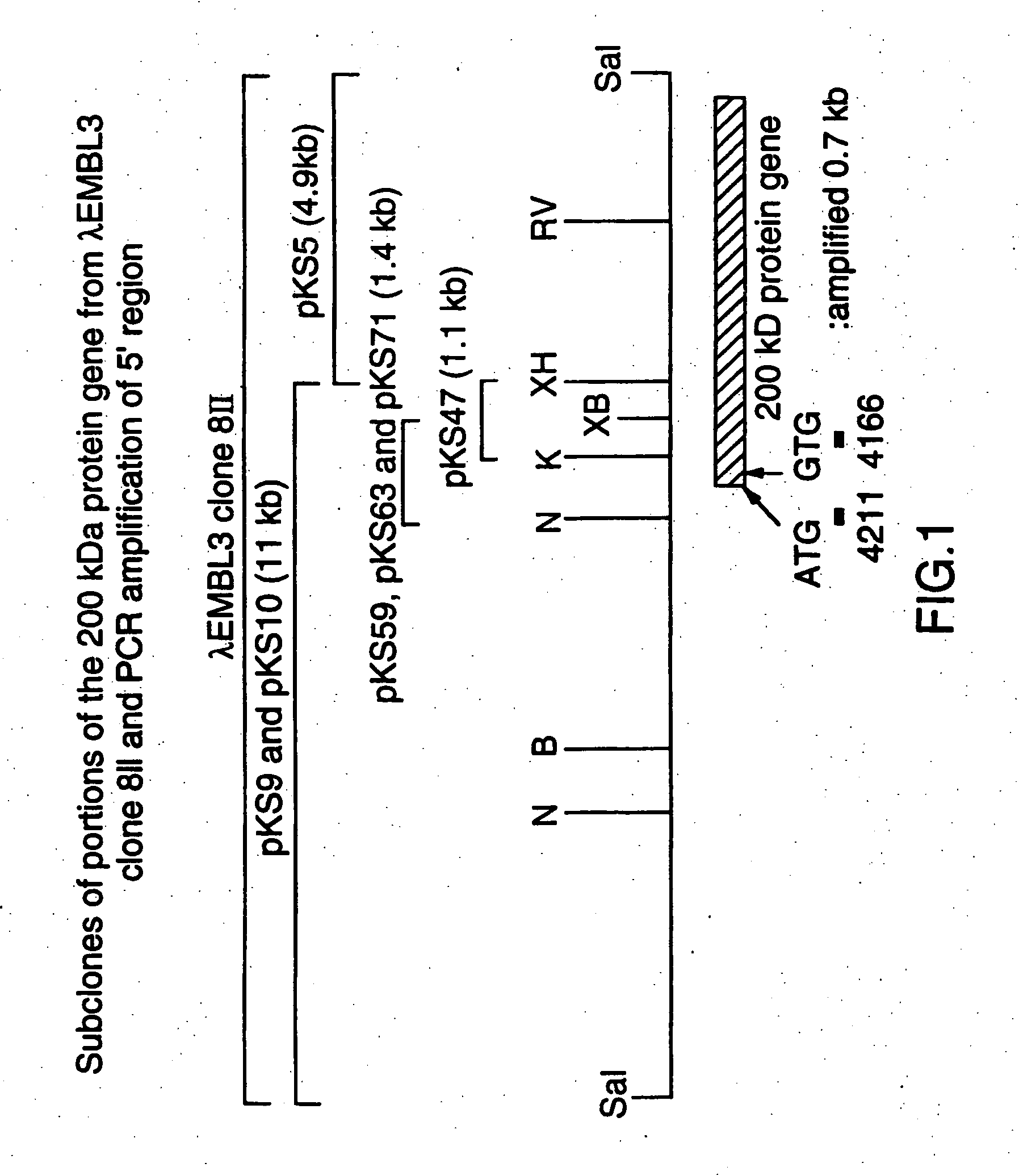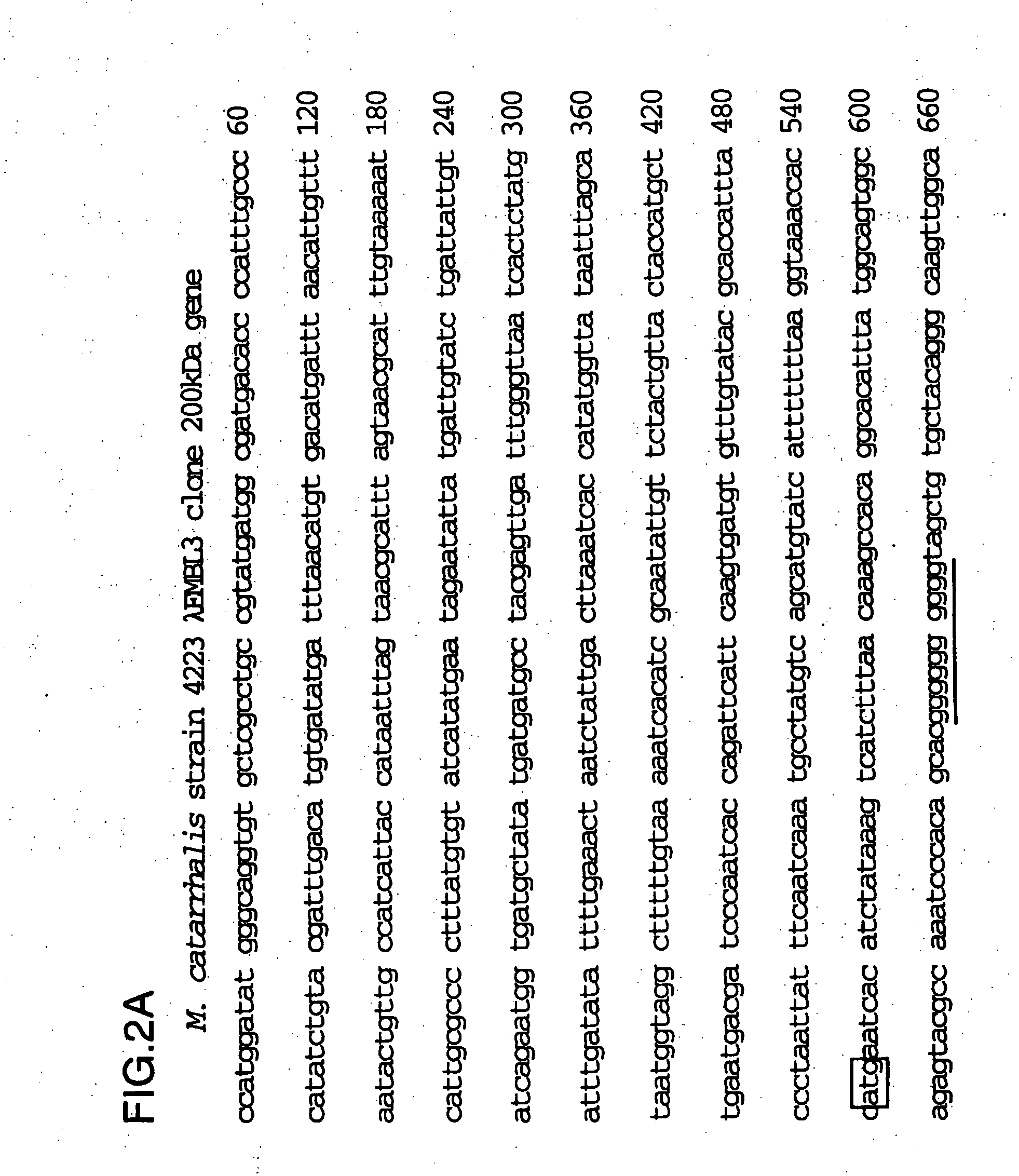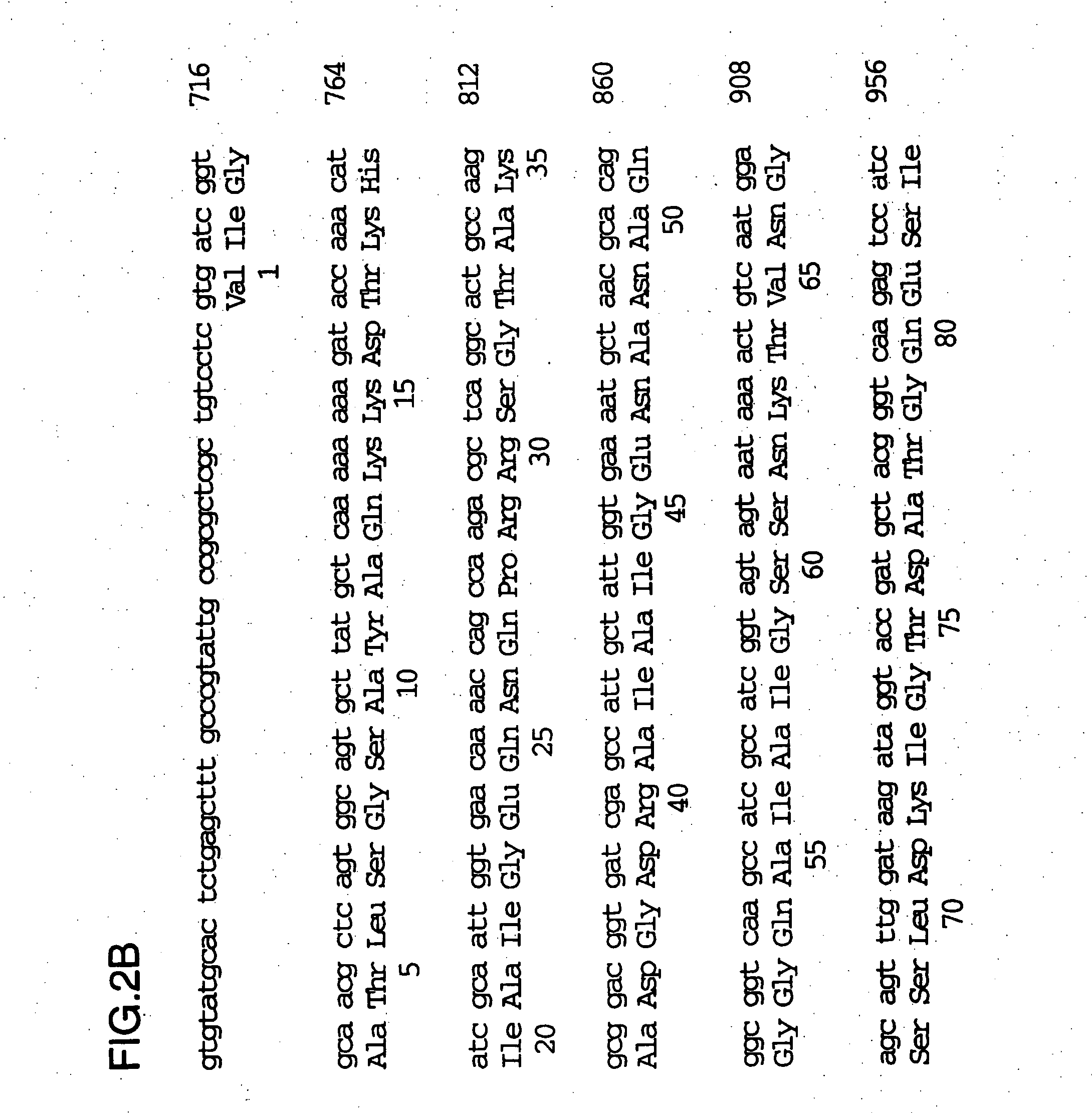Recombinant high molecular weight major outer membrane protein of moraxella
a moraxella and major outer membrane technology, applied in the field of immunology, can solve the problems of serious disease, speech and cognitive impairment in children, hearing loss,
- Summary
- Abstract
- Description
- Claims
- Application Information
AI Technical Summary
Benefits of technology
Problems solved by technology
Method used
Image
Examples
example 1
[0085] This Example describes the cloning of a gene encoding the M. catarrhalis 200 kDa outer, membrane protein.
[0086] A M. catarrhalis genomic library in phage lambda EMBL3 was prepared as described in Example 9 of U.S. Pat. No. 5,808,024 and WO 96 / 34960 and was screened using guinea pig anti-200 kDa protein antiserum. A lambda phage clone 8II, which expressed an about 200 kDa protein, was confirmed by immunoblotting of the phage lysate using the about 200 kDa outer membrane-specific antiserum.
[0087] Plate lysate cultures of this recombinant phage were prepared. The DNA was extracted from the plate lysates using a Wizard Lambda Preps DNA Purification System (Promega Corp, Madison, Wis.) according to the manufacturer's instructions. This phage clone carried a DNA insert of about 16 kb in size (the restriction map for which is shown in FIG. 1). The phage DNA was digested with a mixture of the restriction enzymes SalI and XhoI, and separated by agarose gel electrophoresis. Two DNA b...
example 2
[0090] This Example describes the isolation of chromosomal DNA from M. catarrhalis for use in PCR amplification.
[0091]M. catarrhalis was cultured in 25 ml of BHI broth overnight and centrifuged at 5,000 rpm for 10 min. The bacteria pellet was suspended in 10 ml of 10 mM Tris / HCl (pH 8.0) containing 100 mM EDTA and mixed with RNaseA (final concentration: 100 g / ml) and lysozyme (final concentration: 1 mg / ml). After incubation on ice for 10 min and at room temperature for 50 min, the suspension was gently mixed with 1 ml of 10% SDS and then heated at 65° C. for 20 min. The suspension was mixed with proteinase K (final concentration: 200 g / ml) and incubated at 50° C. for 1 h. The suspension was gently mixed with 10 ml chloroform on a nutator for 15 min and centrifuged at 5,000 rpm for 10 min. The upper phase was slowly removed with a wide-bore pipette and mixed with 10 ml of Tris-saturated phenol and 10 ml of chloroform on a nutator. After centrifugation at 5,000 rpm for 10 min, the up...
example 3
[0092] This Example describes subcloning and sequence analysis of fragments of the 200 kDa protein gene from M. catarrhalis strain 4223.
[0093] The procedures used to produce a phage EMBL3 clone 8II, and its subclones, pKS5, pKS9 and pKS47, are described in U.S. Pat. No. 5,808,024 and WO 96 / 34960. pKSlO was constructed from the EMBL3 clone 8II exactly as described for pKS9. pKS59 and pKS63 were constructed by insertion of a 1.4 kb XbaI-NcoI fragment of pKS9 into pGEM5Z(+) that had been digested with NcoI and SpeI. pKS71 was made by insertion of the same 1.4 kb XbaI-NcoI fragment, isolated from the EMBL3 clone 8II into pGEM5Z(+). Sequence analysis confirmed that all three plasmids, pKS59, pKS63 and pKS71, carried identical DNA fragments. FIG. 1 shows partial restriction maps for the plasmids.
[0094] The full sequence of the 200 kDa gene locus from the DNA clone was described in U.S. Pat. No. 5,808,024 and WO96 / 34960 and is shown in FIG. 2. There is a tract of 10 consecutive G nucleot...
PUM
| Property | Measurement | Unit |
|---|---|---|
| molecular mass | aaaaa | aaaaa |
| molecular mass | aaaaa | aaaaa |
| apparent molecular mass | aaaaa | aaaaa |
Abstract
Description
Claims
Application Information
 Login to View More
Login to View More - R&D
- Intellectual Property
- Life Sciences
- Materials
- Tech Scout
- Unparalleled Data Quality
- Higher Quality Content
- 60% Fewer Hallucinations
Browse by: Latest US Patents, China's latest patents, Technical Efficacy Thesaurus, Application Domain, Technology Topic, Popular Technical Reports.
© 2025 PatSnap. All rights reserved.Legal|Privacy policy|Modern Slavery Act Transparency Statement|Sitemap|About US| Contact US: help@patsnap.com



